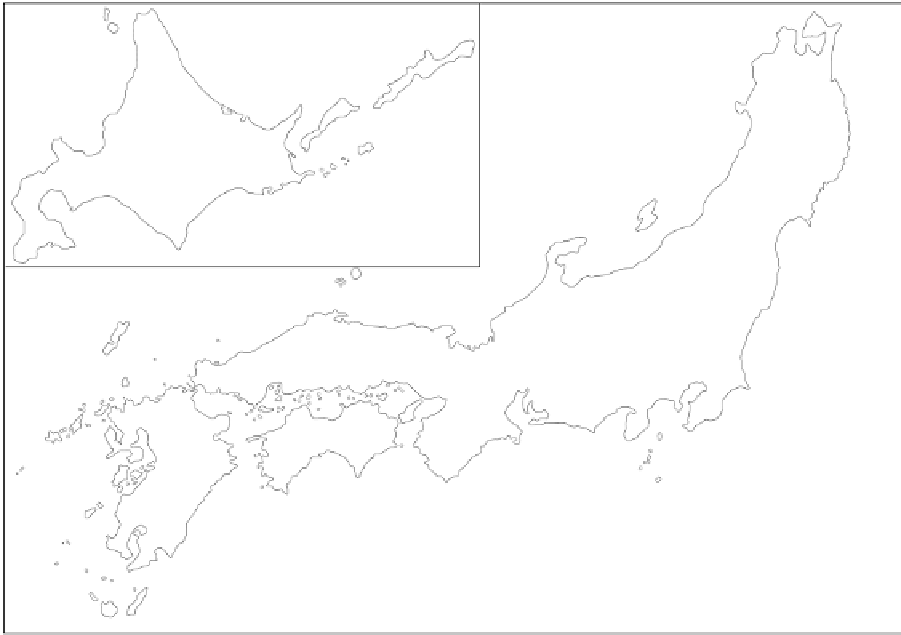Geography Reference
In-Depth Information
Integrated circuits
Hokkaido
Industrial robots
Computers and related
equipment
Electronic equipment
for medical use
Fiber optics, communication,
and related equipment
1
5
10
Number of factories
Gumma
Saitama
Tokyo
Osaka
100
50
0
miles
Kanagawa
Figure 12-10
Distribution of high-technology factories. Why are there relatively few such places on the outer
islands?
From P . P . Karan,
Japan in the 21st Century
, 2005, p. 246. Reprinted with permission of the
University Press of Kentucky .
Urban Japan
After the mid-1630s, the prohibition of foreign trade
stimulated internal interchange of goods and subse-
quent town growth. Minor feudal castles were destroyed
so that there was only one castle town per province, fur-
thering focus of activity in major centers. These centers
became consolidated as civilians were encouraged to
move to the more important castle communities.
Castle towns, with their political and economic
functions, were typically located on level land near im-
portant landscape features. Osaka emerged as the princi-
pal business, financial, and manufacturing center in
T Tokugawa Japan. Cities were also linked by highways
that stimulated growth and trade. The most famous was
the T Tokaido Road running from Osaka, eastward through
Nagoya, to Edo (T (Tokyo), the capital. By the middle of the
eighteenth century , T Tokyo had one million inhabitants.
With rapid post-war development in T Tokaido Road cities,
an urban-industrial region emerged to be known as the
T Tokaido megalopolis
.
City development in Japan can be traced back to the
eighth century , when the first permanent capitals of Hei-
jokyo (now Nara) and Heiankyo (now Kyoto) were estab-
lished. Soon other cities were built, primarily for political
and military purposes. Some, such as Naniwa (now
Osaka), were built to meet the needs of travelers. As the
central authority of Japan' s military government waned in
the fifteenth and sixteenth centuries, towns increasingly
evolved around castles constructed by regional warlords.
CASTLE TOWNS
The catalyst for urban growth was the fortified
castle
town
. One of the most important of these was Osaka,
where a grand castle was built in 1583. This served as
the nucleus for urban growth. Moreover, government
policies stimulated the rise of Osaka and other towns.


















































































































































































































































Search WWH ::

Custom Search